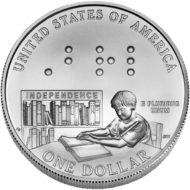It started about a year ago when I was first asked to do some work in India. After much preparation, I spent almost two weeks in Bangalore, and some days in Visakhapatnam and Pune. In general, I try to prepare for my trips by reading about the place I’m going to. Sometimes I do very poorly, but I tried to take India seriously.
I talked with people, read some articles, and books. My favorite was Ervin Baktay’s book about his three stay in India. This Hungarian orientalist spent three years in India between 1926 and 1929. It is almost a century later now, but the concepts were interesting, and in case of such a rich and ancient culture, or should I say cultures, a hundred years should not matter much. It was fascinating to read about the different religions and how they coexist together in India. Baktay’s book was the most helpful throughout my trip. I of course, also prepared numismatically, which wasn’t as easy as it seemed originally.
Practically, I have not done anything I wanted to, and managed to do things I never thought about. As always, when I put efforts into my trips, these turn out to be better than originally expected.
Throughout my more than two weeks in India, I still managed to get exposed to numismatics, and learn and acquire a little bit.
Also, if I have time I try to learn a few words in the local language. In case of India, picking a local language is an undertaking. I heard that especially in the big cities, one can get around in English. Great, but not exciting. There is just something about flipping through a language book, understanding the structure of the language, listening to the radio before the trip to get a sense of what the language sounds like, or read some text and try to make sense of it. As I will be spending most of my time in Bangalore, first reading about Kannada made sense. However, I found very little information online, especially in a digestible format for myself. The different scripts used in India are relatively hard to read using speech or braille. Now I’m not sure if it is also for native speakers, but for my purposes it was going to be too time consuming, particularly because the main purpose of my trip is work, and I had to get ready for each team. So, instead of Kannada, I decided on Hindi, which is probably the second most spoken language in India after English. I need to check this statement, I think I read it somewhere, and I knew that Hindi is widely spoken, so I never checked into the numbers.
I found an online Hindi book and got acquainted with the language a little bit, read about the grammar, alphabet, pronunciation and learned a few words.
The most fascinating find was that dog is kuttaa in Hindi, and kutya in Hungarian. I even learned in Hindi that I would like to get coins to use it when paying. I never used the phrase, but learning from my previous trips, one never knows…
I started by contacting as many places as I possibly could research. Coin clubs, coin stores, online forums. I am disappointed to say, aside from the Falcon Coins Gallery in Bangalore, nobody got back to me.
The next difficulty was learning about Indian coinage. There are some materials out there, but the information is vast, and is hard to find. The best resource I found was the Mintage World site. I wrote about it last year. They have quite a bit of materials about the different Indian states, sultanates and historical periods. You can start reading about it, but in order to download the entire PDF document you have to register. I originally thought it was the best find on the net, and I contacted them. After a few days troubleshooting, they finally told me that you can only pay if you have an Indian bank account. Interestingly, even if I had a bank account, I still wasn’t able to get to the screen where I would pay. I offered anything, to send them money in cash in India when I get there, but there was nothing they could do. I don’t get it why they couldn’t have loaned me two weeks of access. From a site which is so dedicated about promoting coinage in India, it was very disappointing. Unless they actually don’t have the entire material they are advertising before their system error page. The site was still useful reading about the individual coins, but given the amount of time I had, a thorough review of history could have been useful. Thanks to the Falcon Coin Gallery, now I have that too, but more about it later.
After trying to learn as much as I could, finally I arrived to Bangalore at the end of November. This time without Baldwin, due to paperwork I wasn’t able to bring him with me. I got quite a bit into guide dogs and international policies when I wrote about my visit to Cambridge, so I won’t get into the details here.
It was my first time visiting India, it is a fascinating country. I really enjoyed talking with the people, exploring the culture and the food. But as always, work was first priority.
I was surprised to find that the hotel didn’t have coins. I went to the bar just so that I could pay with cash, I had beers in the minibar, and I was way too tired, but I couldn’t miss a chance to get some coins on the first day. However, instead of coins for change, I got more money back in bank notes. When I asked for change, in English, because all the people knew English at the hotel, they told me they didn’t have any, I had to go to the bank. So much about collecting…
On my first free evening, where else could I go, I visited the largest local coin store, the Falcon Coins Gallery, the only place who wrote back when I contacted them. I called an Uber and got there in about 15 minutes.
Coincidentally, it was The feast of St. Eligius, the patron saint of numismatists, as I found out that day from my friend on Twitter. He sure made my day…
It felt like a regular shop off the street, it wasn’t hard to find. One of the owners, Mr. Parekh set down with me at the table and showed off some interesting Indian coins. I tried to moderate my purchase, first of all probably it wasn’t the cheapest place, as it was a high end store, and there is no need to buy everything at the same time, especially that I didn’t even know about most of the coins. The history of coinage in India is just vast. However, I have to say, the prices were very reasonable, and Mr. Parekh’s knowledge about the coins was amazing. I would have paid just to be there. It was interesting to touch some of the Indian coins I have read about, and a few more I never knew existed. I bought a variety of coins, in particular trying to get ones which are easiest to feel.
Mr. Parekh showed me some nice old coins, but mostly we looked at the ones from the last two centuries.
I got two books, one about the coinage of Karnataka, which is the state where I was staying, and a general introduction to the coins of India. Probably the best thing I can get from a country’s visit.
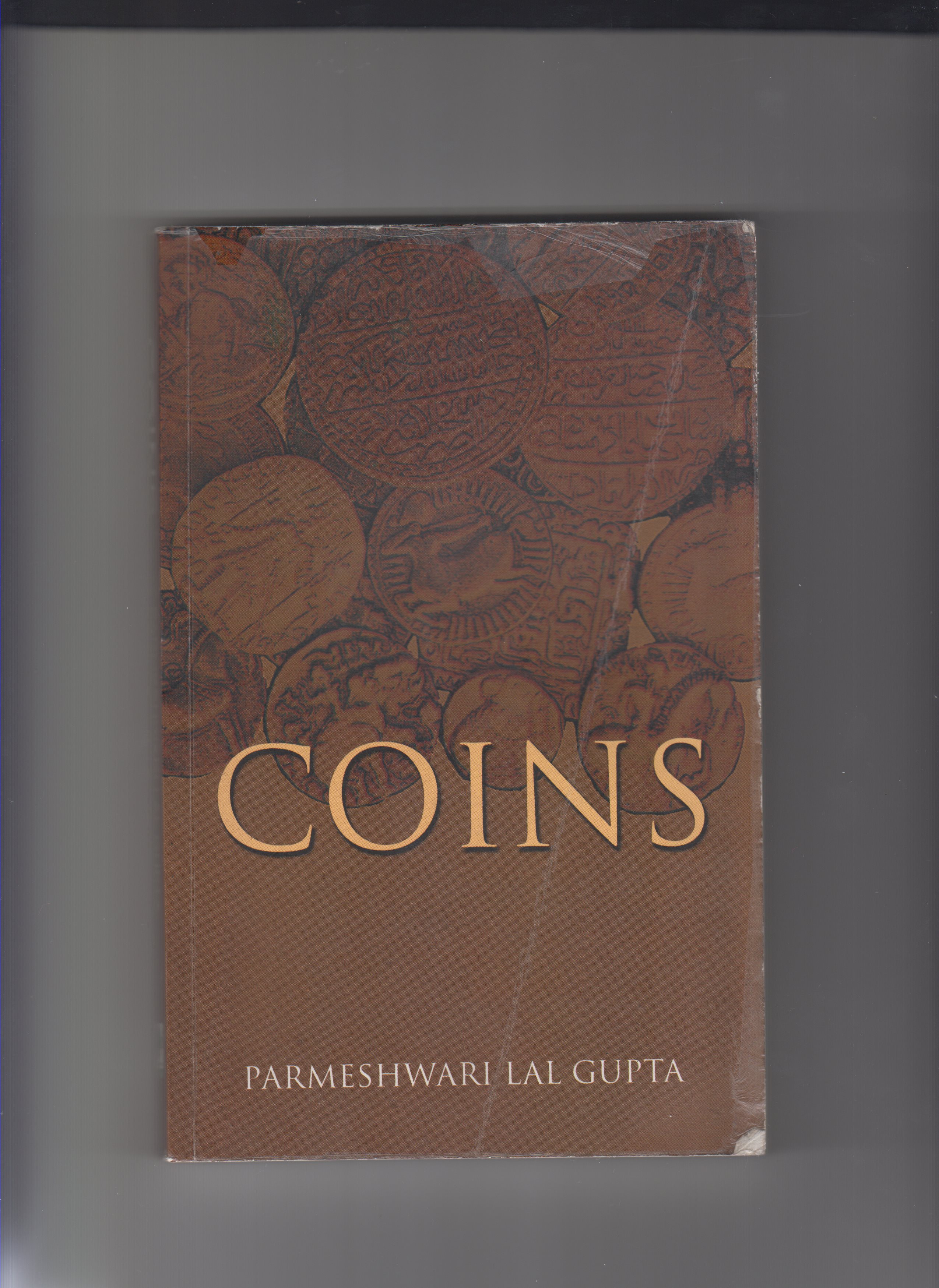
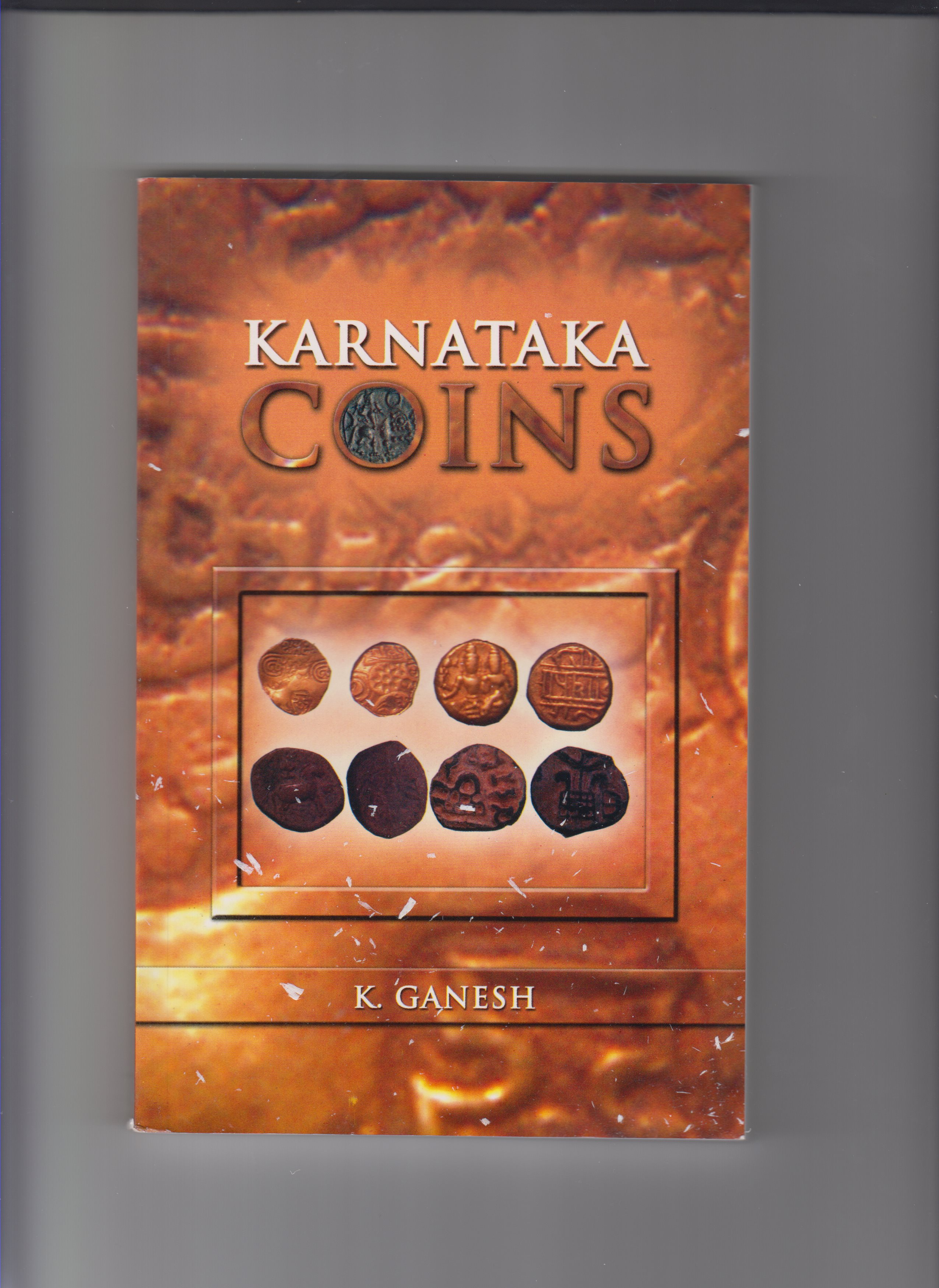
The coin store was opened like an ice-cream shop, it was interesting to me that they considered it safe. There is a point that most people probably don’t know what the value of coins is inside, but of course they have adequate security anyway. it was just more welcoming than other stores I’ve been to.
After Mr. Parekh totaled my purchase, I stupidly asked if there was any room for haggling. The question was ok I guess, but there wasn’t a good way to ask it. After all, he had good prices in the first place, though in the US, the coin store would be the only place where I would negotiate the final amount.
So, I just tried to brush off my stupidity somehow, and didn’t ask for a discount. Here, publicly, my apologies Mr. Parekh, I did not mean to be rude, I was curious about something I read and it didn’t come out the way I meant it. After I made the payment, they offered a tea, and called Mr. Kirti M Parekh, who is the father of the gentleman whom I was working with. he is the president of the Karnataka Numismatic Society. We talked a little about collecting and took a picture, all three of us.
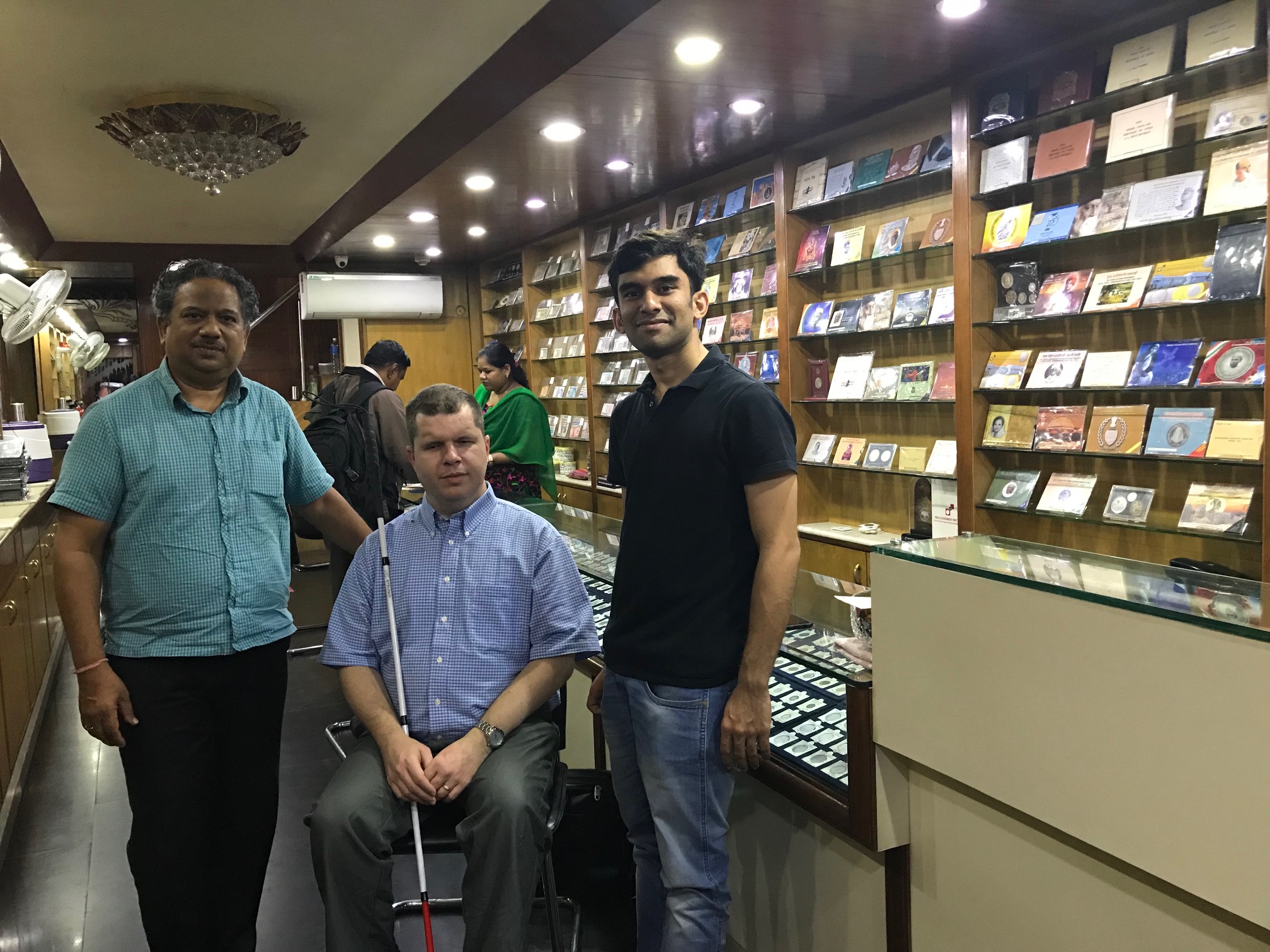
It was the tenth day in the country and I haven’t seen a circulating coin yet. It is time to do something about it. I tried to ask for coins, at the hotel it doesn’t exist, people don’t use it. I haven’t heard coins where people were paying, but it is also true that I haven’t been around cash registers much. I either got food or coffee at work, or it got written up to my room. I’m mostly using bills for tips. I asked around a bit, but nobody had coins. I can’t just leave India without circulating coins if they exist, so today I stopped by the bank on the way from work to pick up a few.
The problem wasn’t with English, they just couldn’t figure out what on earth do I need coins for. I have asked for a few of each coins, and the rest in 10 Rupees, I handed the lady a 500. First she said it was too much and then not enough. Anything for coins, I pulled out another 500, let’s make this happen, I don’t want another few Rupees to stand between me and my circulating coins, especially not in a bank. But I was wondering to some extent. It turned out that they would only give me packages of coins, and the pack of 5 Rupees has a hundred pieces, so if I wanted to have one of each, I needed more than 500. Now, it was my turn to wonder, why is it that in a bank I can’t just get a few coins. But I can’t and that was it, I either take the bags of my to 500 bills back. Oh no, not my 500s, I can’t leave without coins, who knows if anybody else carries them. So, let me have it, I wish I didn’t drag my laptop with me, but finally there was enough room in my bag. I got a pack of fives, a pack of ones, and two packs of twos. I didn’t want to argue that maybe one would be enough and 20 ten bills will do to. Since I heard and read many things, I asked if they also carry the 10 Rupees and the 50 Paisa coins. None of those, they don’t use them, but here are my bags, where am I going next. Ok, it is better to leave with coins, so I quickly said my goodbyes, grabbed my bag and left. They were very nice to help me walk to the hotel which was about 100 yards away. I didn’t think I needed help, I just had to go straight, but after all it was useful, I couldn’t hear a thing on the street except the horns. Fortunately, not from inside anymore. It was a nice pace of change.
In the room, I took a picture of the bags, I thought otherwise nobody would believe me, and I got to opening them plus a King Fisher.
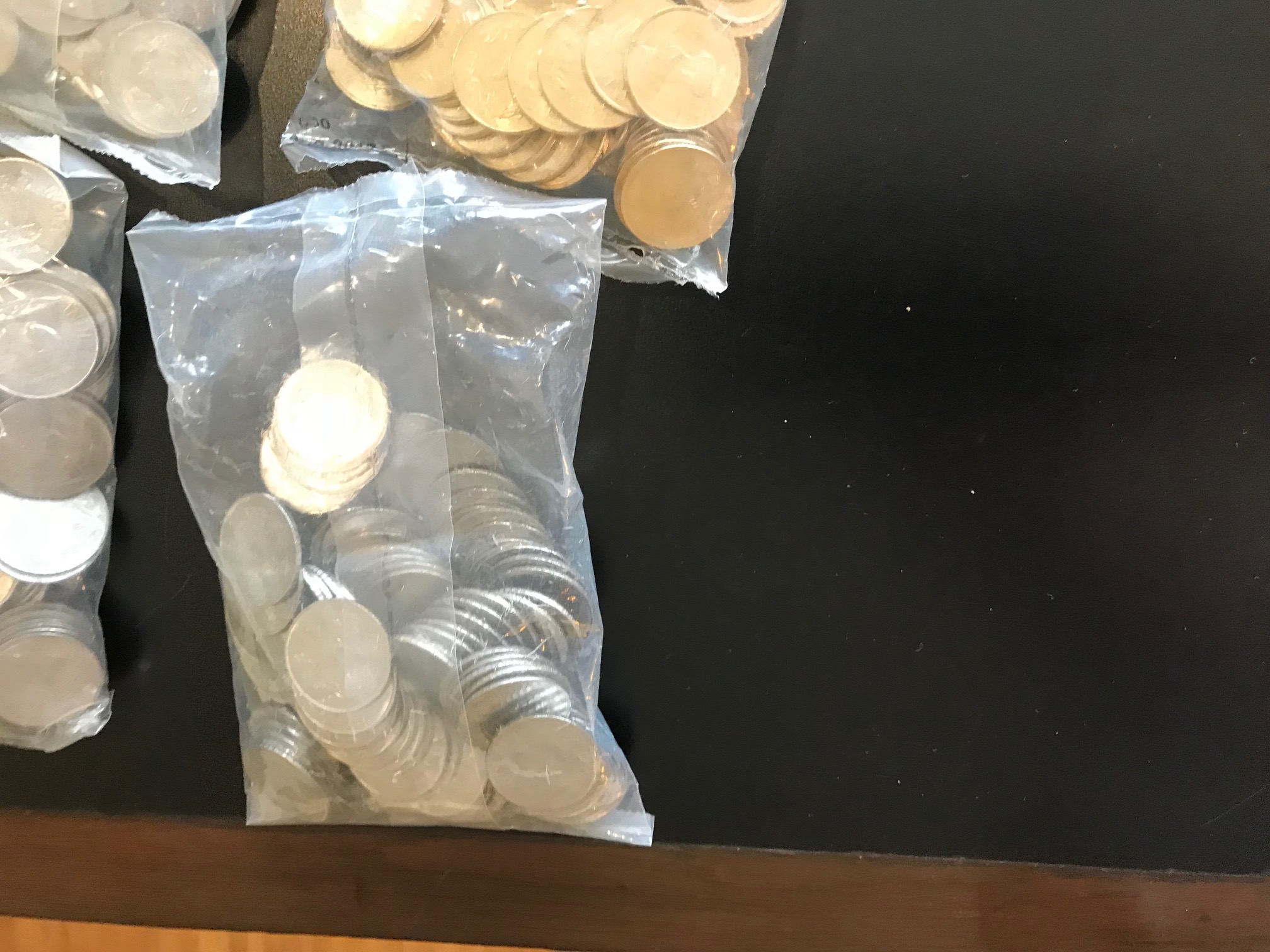
Now I understand what my friend, Ole was talking about when he said that there are many error coins in India. Not necessarily only error coins, but the strength of the design is rather different, and in some cases I couldn’t decide if the coins were reeded or not. Ok, the catalog says, for example, that the 2 Rupees are reeded or not reeded. I had no idea what they meant until I touched the coins. Well, they are either reeded, or not reeded. Some are all the way, some only on parts of the edges. I have never seen a pile of similar value, so different coins. On some the edges are almost sharp, on others only half of the edge is reeded, on another I couldn’t figure out if it was reeded until I scratched it with my nail. Though I don’t think they were circulating too much, otherwise they would be dirtier. Later I found out that all of these coins were minted in 2017.
According to Numista, I had 1.956 Kilograms of coins, 400 pieces. That’s not according to Numista, the 400 is according to the bank, I haven’t counted them.
In general they are not very interesting coins for the touch. I tried to find the mint marks, because it is a very interesting concept, but the coin design even on the nicer ones is so shallow that it is very hard to feel anything, for most things I need to use my nails. The difference between the same value coins were much more interesting. But I’m so glad I got them. It was just bothering me to no end, each day I was counting how many days I had been here without coins. Now, I had to think about how I’m going to get rid of them. But that was a better problem to have. Finally I ended up bringing them all home.
Before I left Bangalore, I visited the National Federation of the Blind.
They sell a bunch of things, an interesting smart cane which vibrates as people approach objects, both feet and upper body level. It sells for 3000 rupees. I saw the same concept at a conference selling for 700 UK Pounds. Same thing, except that the UK one was much heavier.
They had talking clocks, electronic book readers, all kinds of useful things for the blind, all at manufacturer cost, very reasonable prices.
I didn’t need “stuff”, but I wanted a few things for myself, so I got a few of the money recognizers, for 7 rupees per piece. You fold the money over it, and based on the length there are tactile points where you can tell which note it is exactly. It must be an older one, because it still works with the 1, 2 and 5 rupees. The larger bills are harder to recognize because their length is the same, the width is different, I wonder why they didn’t create a device that can tell the width as well. But anyway, it is a good start if you don’t have a phone, and quite practical on a key chain. I also got a braille Hindi and Kannada alphabet.
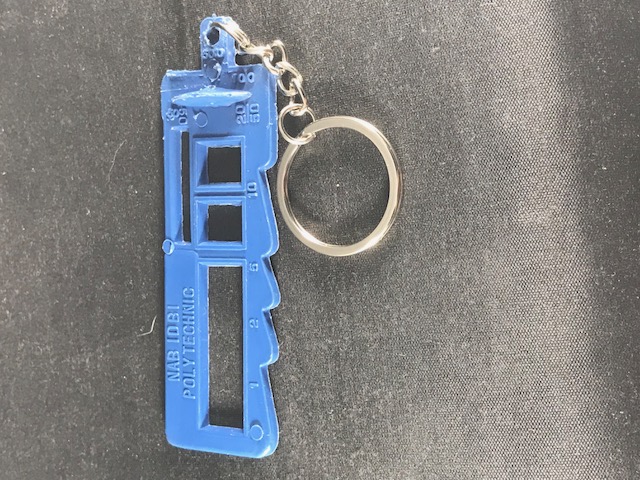
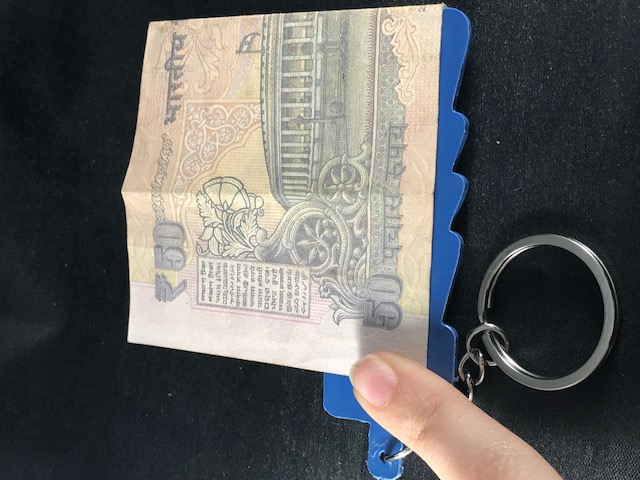
The Karnataka Numismatic Society was meeting on December 10th. As I had to be in Visakhapatnam on December 11th, unfortunately I wasn’t able to attend. But I can’t have it all.
I had to switch flights in New Delhi. When I was in New Delhi, I checked how far the coin museum was. About two miles more than I originally expected, it is one thing what the GPS says about where the airport is, and another where passengers really are. As I learned in Bangalore, just because the GPS or any mapping service says so, it doesn’t mean it is so.
This adds up to 8 miles one way. Doesn’t sound good, assuming if the museum is where the maps says it is.
Two days later, on the way to Pune, I had to switch flights again in New Delhi. The original plan was to use the six hours of layover time and go out to the National Museum to check the coin collection. There were a few issues with it. As mentioned above, when I was here two days ago I found that I’m actually two miles farther than I thought I was, which is an extra four miles in traffic, in Bangalore it took over an hour, but that’s just a comparison for the sake of interest, doesn’t mean a thing. One thing for sure, traffic is not light in New Delhi, but I have no idea what it really means.
Also, the airport was busy so we were circling above Delhi adding to the already bad smog. That shaved of another half hour from the plans. There was just enough time to go to the museum and find somebody to show me the coins, as I did not hear back from anybody. So, I was already at a pointless venture. But, most importantly, the day before my colleague told me that he didn’t recommend going out if I only have six hours. Well, now I see why. But as always, certain things don’t work out, and others happen which are unexpected, still not a bad deal, I still got to do many things.
Overall, personally, professionally and numismatically, it was a great trip. I came home with a few interesting coins, and I’m looking forward to reading the books I got.
